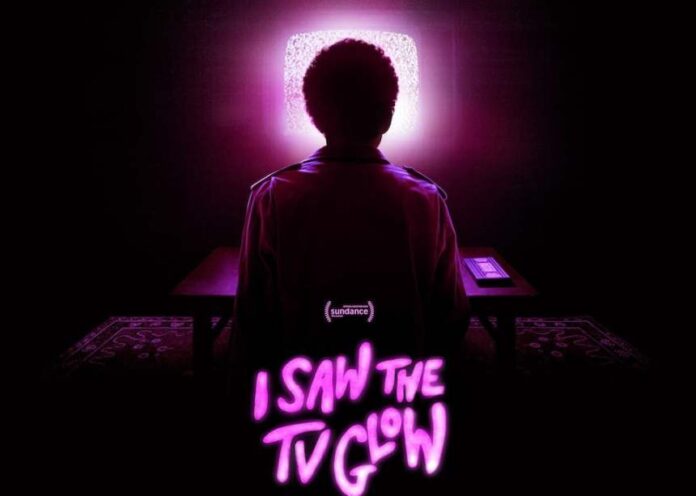It’s safe to assume a lot of us grew up watching a tv show that not only helped inform our identities but also our fears. For me it was Nickelodeon’s Are You Afraid of the Dark, a show that made me appreciate horror storytelling and how scary monsters could be when they had great backstories pushing them forward. For others it was Goosebumps or Eerie, Indiana or Buffy the Vampire Slayer. Older generations had their own shows, The Twilight Zone and The Outer Limits among them. Regardless, these shows possessed the power to confront viewers with metaphors and creepy situations that could force them to reckon with their own sense of self at a young age. In the process, it was hard not to put ourselves in the shoes of the kids that faced the supernatural. We wanted to be as brave as they were.
Jane Schoenbrun’s I Saw the TV Glow taps into this world of identities and the tv shows that would shape them for a story that looks at adolescence as if it were a tv show of its own, one that could get rewritten for the worse at any moment.
I Saw The TV Glow follows Owen (played by Justice Smith when the character’s older and by Ian Foreman when he’s younger) and Maddy (played by Brigette Lundy-Paine both as the young and older version of the character), two friends who bond over a show called The Pink Opaque, a mix of Goosebumps and Charmed (with some Supernatural) that also follows two friends who face off against the demonic forces of main villain Mr. Melancholy.
As Maddy and Owen’s friendship grows, finding itself reflected somewhat by that of the kids in The Pink Opaque, their personal development turns episodic. Its progression isn’t all encompassing, though. It’s more akin to how we remember our younger years in terms of special or traumatic moments that mark us. It’s a path paved with its fair share of tragedies.
This idea is furthered by Schoenbrun’s decision to have Owen break the fourth wall for quick bits of narration to offer insight into both his feelings and the things that happen to Maddy. They act as points of no return, of memories that will haunt the character. In fact, the screen glows with neon-infused words marking the beginning of new chapters in the story, further cementing that sense of life masquerading as a tv show.
You’d think this focus on tv and how influential it is as a source of identity would keep I Saw the TV Glow in nostalgia territory to the point of it being only decipherable to Nineties kids, but it’s actually the opposite. Schoenbrun’s neon-tinged visuals (beautifully composed by cinematographer Eric Yue) allude to the ephemeral quality of memories, to how we construct and unconsciously manipulate them down to the way they’re lighted. It opens up the movie to anyone who’s ever obsessed over a tv show and survived middle school and high school in large part because of it.

That’s not to say there aren’t any references and influences strewn throughout. There’s a scene in a dark bar with a whole musical number that echoes a similar scene found in the original Twin Peaks series, and there’s flashes of Tobe Hooper’s Poltergeist and David Cronenberg’s Videodrome that are potent enough to come across as intentional winks to them.
That Schoenbrun also shot the scenes from The Pink Opaque in the fuzzy analogue style that characterized Nineties TV strengthens the idea that nostalgia is how we reconnect with the bits and pieces we used to put our identities together.
And then comes the gut punch. I Saw the TV Glow slowly pulls back the veil on nostalgia to reveal its most frightening realization: growing up means deciding what things will and will not accompany you into adulthood, knowing the choice can backfire. It’s a tough consideration as Schoenbrun essentially argues that building one’s identity is as much about breathing life into the self as it is about the willful death of certain parts of the self. What you kill to become your true self is crucial and it determines a lot, but not letting certain things die can prevent the full blossoming of identity. Nostalgia can either be a reminder of what we became or a reminder of what we didn’t become, and that’s hard to come to terms with.

I Saw the TV Glow takes nostalgia and turns it into a source of terror that finds scary things in the memories of our youth. Like a tv show, there’s certain episodes that we love to watch and rewatch. But then there are also episodes we dread catching up to, that we wish weren’t a part of the whole. We can skip them, but they don’t stop belonging to the story. And they’ll haunt the characters involved in one way or another.
Source: Graphic Policy


